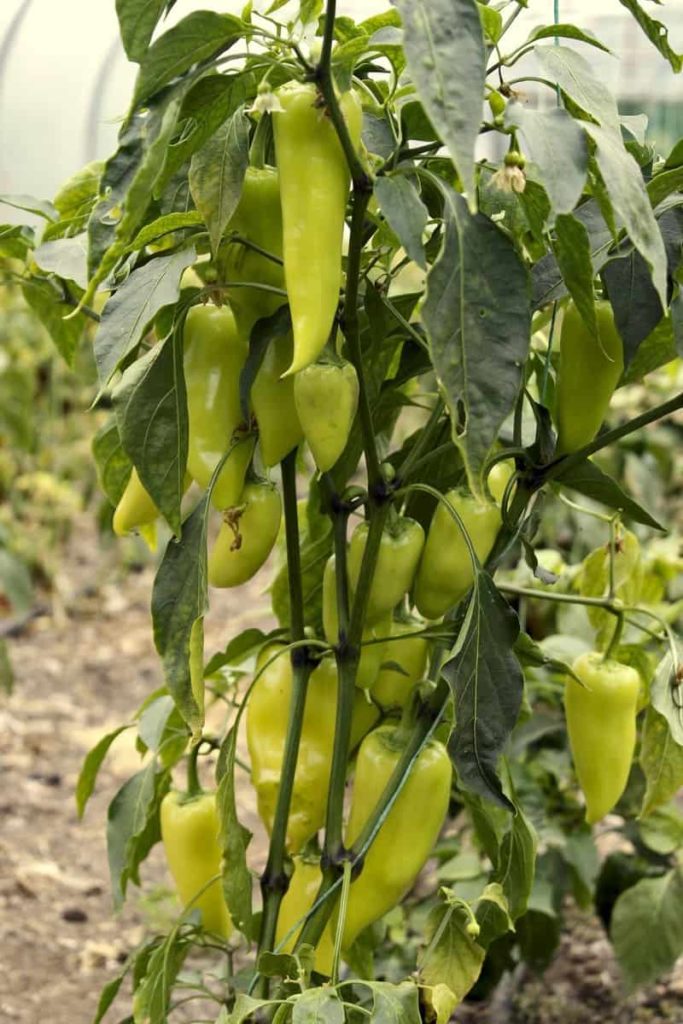Soil pH determines the availability of essential plant nutrients in your soil. The soil used to plant Pepper will affect your Pepper growth more than expected. The right soil will improve the availability of nutrients for the plant. It will provide the best food, help in good drainage, and keep moisture balanced. Let’s check out how to prepare the soil for Pepper/Chili.
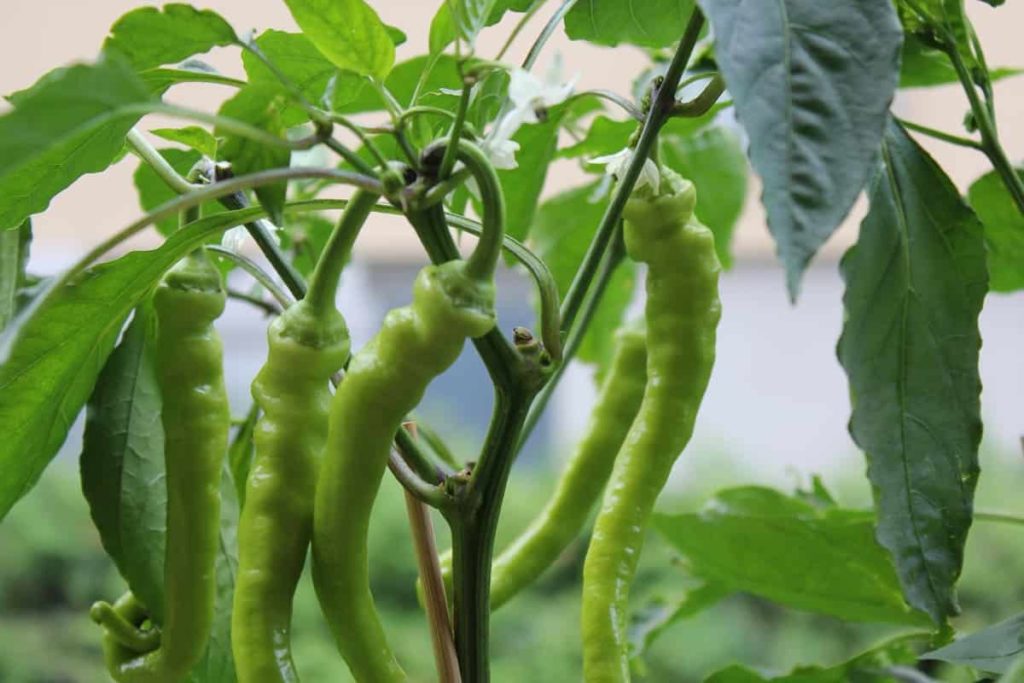
Peppers need well-drained soil as they need plenty of air supply. These plants need an adequate water supply to survive. If plants get too much water, it can cause fungal infections in the roots. Soil pH also affects the way different elements interact. By getting soil pH near the best Pepper levels, your Pepper remains in fuel with the nutrients they need the most.
Peppers need all the nutrients, but they need them in different quantities compared to other plants. Calcium is particularly important for the development of Pepper. Blossom end rot is caused by low calcium or improper soil pH due to calcium deficiency. Calcium is among the first to go when heavy rain leaches alkaline support nutrients from the soil; low pH results. Knowing whether the deficiencies are due to pH or real shortage determines what to do with your Peppers and your pH.
How to prepare the soil for Pepper/Chili
Soil pH for Pepper
Bell Pepper and Jalapeno Peppers thrive in a perfect soil pH between 6.0 and 6.8, while Habaneros excel at slightly more acidic levels around 5 to 6. So, the ideal pH for Peppers is 6 to 7. Check your soil several months before planting Peppers, so catch adjustments before the Peppers are transplanted into the ground. Follow your test recommendations closely, as amendments working in a region can be ineffective elsewhere.
Incorporating organic matter and organic mulch gradually reduces pH over time, making the soil more acidic. Elemental sulfur worked in some soils at a depth of 6 inches at a rate of 226 grams per 100 square feet can reduce the pH to 1.0 units. The ground limestone makes the soil more alkaline, and in some soils, the soil rises to a pH of 1.0 units when applied at the rate of 1.13 kg per 100 square feet.
In case you missed it: 17 Common Pepper/Chili Plant Problems: How to Fix Them, Solutions, and Treatment
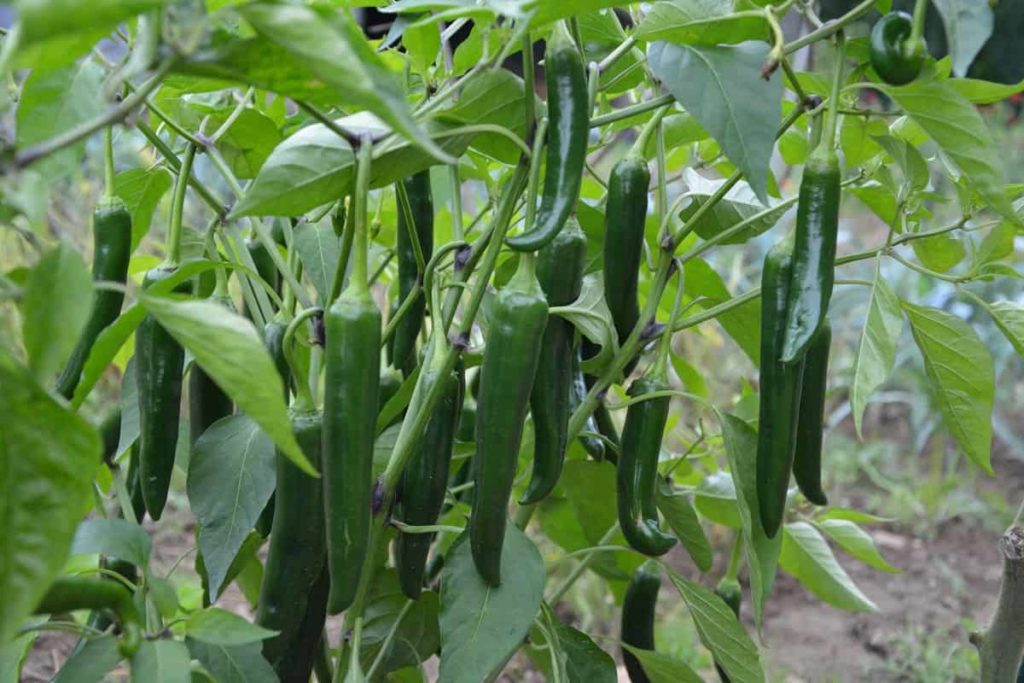
If your Pepper plants are growing in a very alkaline environment, it can affect their ability to take the essential nutrients needed from the soil. Nutrients become less soluble in an alkaline environment and are more likely to live in ionic forms than absorbed from your plant’s roots. As a result, Peppers will often grow more slowly and produce less. To increase soil pH for Pepper, you can add lime, wood ash, or crushed oyster shells to the ground.
Baking soda is also quite effective in increasing the pH of acidic growing sources. Eggshells and dolomite lime are also great sources of calcium that will help increase pH when added to the soil. Another way you can increase your soil pH is to add more fertilizer to magnesium. However, keep in mind that it will only work if your Pepper plants are deficient in magnesium.
Preparation of soil for growing Peppers in pots
- 1/4 Organic material – Compost, rotten manure, chicken manure pellets, etc.
- 1/4 topsoil – The topsoil is best for adding volume without extra nutrition.
- 1/4 drainage – The perlite, vermiculite, or sand work very well to help with drainage. It also gives more channels to grow roots easily.
- 1/4 Maintaining water and nutrition – Peat moss and coco-coir enhance soil nutrient retention capacity. The peat reduces pH, so lime is often added to counteract its acidity.
Compost, rotten manure, alfalfa, and others provide natural, slow-release nutrition for your Peppers. There are several options for healthy drainage. Sand is usually the cheapest option, but it’s heavy if you make soil for a raised bed and is a great option because you won’t pick up the soil later. Two light ingredients common for drainage in potting soil are perlite and vermiculite.
These are easy to find in gardening centers, and both drain very well. They also help maintain moisture, making them the best addition to pottery. Perlite is a particularly useful material that helps prevent compaction over time. It is extremely light but holds one tonne of water per cubic inch.
Preparation of soil for growing Pepper on grounds
Peppers grow best in fertile, well-drained soil where they will get maximum sunlight. Sandy loam soil with a high quantity of organic matter is best for the early crop as the soil heats up rapidly and drains faster. Soil testing is one of the things that will tell you is the amount of sand, dirt, and clay you have. These are three basic ingredients that make up the soil. Some plants prefer dense, soil-rich soil, while most vegetables prefer well-drained, loamy soil.
Peppers thrive in sandy, loamy soil. It means that soil is made mainly of sand and silt, with only a touch of clay. Regardless of your soil composition, compost and other bulky organic materials will move your soil in the right direction. Compost is rich in nutrients and adds structure to the soil, which improves the ability of air and roots to grow independently.
How to grow Pepper in poor soil
You can modify your soil while planting Pepper to reduce clay content. Peppers generally prefer soil with an organic matter with good drainage. Clay soil can cause trouble in the amount of water your Pepper plants get, so it is important to improve drainage. Once you modify the soil type, you will plant Peppers, and your crops will improve. Add about 3 inches of equal portions of peat moss and compost to your garden area.
In case you missed it: Florida Container Gardening: For Vegetables, Herbs, Flowers, and Fruits
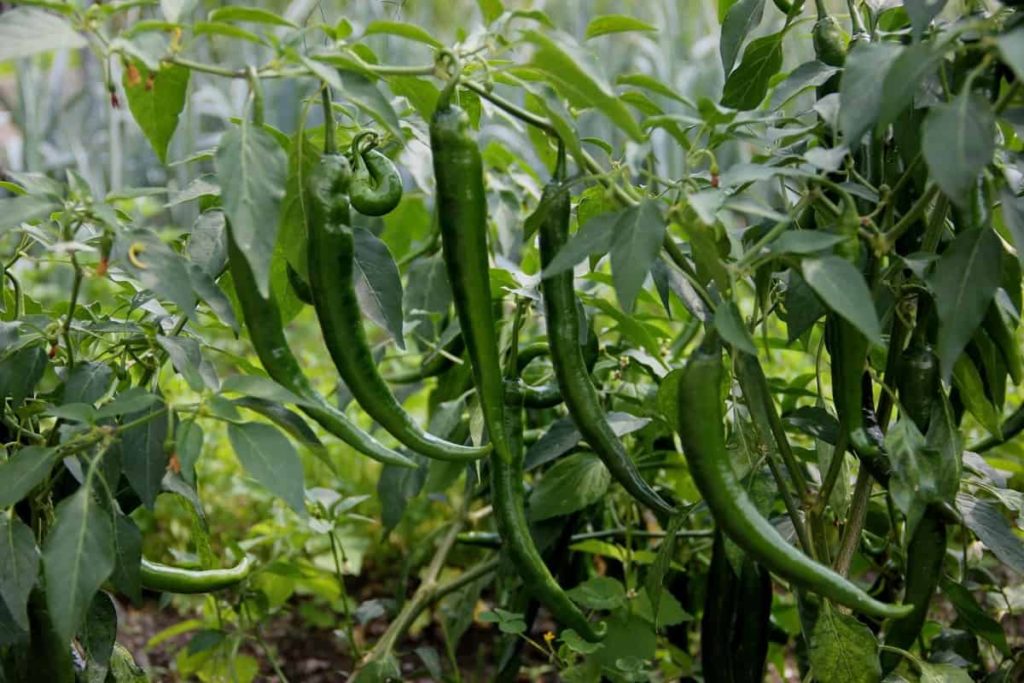
Mix it evenly in the top 8 inches of soil to modify your clay soil. Your soil will become very loose and loamy. Start your seedling six weeks before the last frost. Apply two seeds 1/2 inches deep in each part of your starter tray. Water them daily to dampen the soil. Add 10-10-10 manure to the top 4 inches of soil in your garden after the last frost. Place a plastic mulch cover on your garden area. Make holes for your plants 18 inches apart in rows 3 feet apart. Transplant your Pepper seedlings when they become at least six leaves and are 5 inches long.
Soil composting for Pepper
The Pepper plant will need different nutrients throughout its growth cycle. Nitrogen helps in the onset of growth to support strong stems and abundant leaves. Later in plant life, there should be a greater balance of phosphorus and calcium to support fruit growth in your compost. Never use fresh manure as fertilizer in the growing season.
Because it has not been allowed to age, bacteria can still be present in fresh manure, with the courage of farm animals, potentially leading to food-generated diseases. While fresh manure eventually breaks down and becomes compost, you should apply fresh manure several months before planting to give time to reduce or eliminate these risks. Peppers need calcium to build walls of healthy fruit cells.
You can always adjust the type of compost you are using according to your plant’s growth phase, and a well-balanced compost that contains all the nutrients that need Pepper can help your plants grow at any stage of their life.
Land preparation for Pepper
The basic soil preparation begins a few weeks before the transplant of Pepper seedlings. You should remove the remaining weeds of any previous cultivation and plow well. At the same time, you should remove rocks and other undesirable materials from the soil. Choosing a well-drained area that has not recently been harvested with a Solanaceous crop is important.
Burning a 3 to 4 centimeters layer of rice straw on a seedbed before sowing and making a raised seedbed of 15 centimeters or more to improve drainage reduces the problems of soil-related diseases. The bed level is covered with a thin layer of compost or rice straw mulch. High nitrogen can cause Pepper plants to grow very fast, making them more susceptible to disease and less productive.
In case you missed it: Soil Preparation for Ginger Plants: Best Soil Mix, pH, and Compost
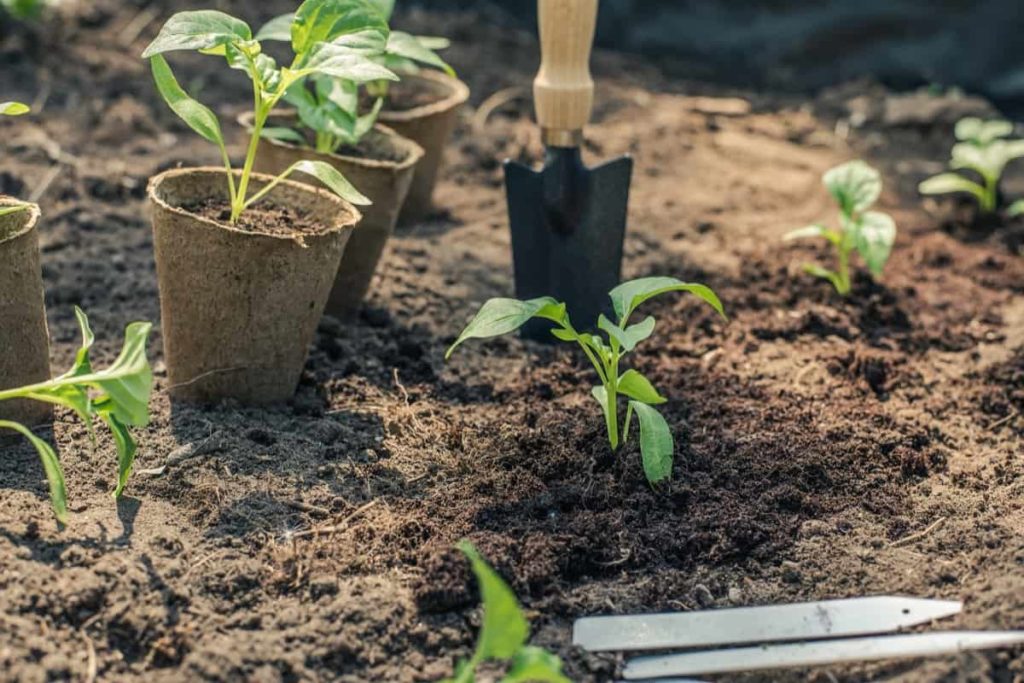
Several weeks before planting, work the soil 8 to 10 inches deep and rake it several times to break the large clods. Do the soil work only when it is so dry that it does not stick to the garden’s tools. You can use compost, peat moss, rotten hay, or other organic matter. Place Pepper plants about 2 to 3 feet between rows at 18 to 36 inches. The plants will eventually rise to about 3 feet high.
Best soil mix for Pepper
The best potting soil for Peppers consists of well-drained, often perlite, sand, or vermiculite, rich in plant nutrients, rich in organic manure, pH neutral, and weed-free. You should add compost to the soil mix if you have compost available. Mix some Epsom salt (magnesium sulfate) and bone meal. Add Epsom salt and bone meal to the Pepper soil mix containing perlite and vermiculite.
The Epsom salt is rich in phosphorus and magnesium. Both these nutrients will give you strong and green plants. Bone meal is made from the bones of the animals and contains nitrogen, potassium, and phosphorus. On top of these important nutrients, they also contain micronutrients that are important for the health of the Pepper plant. Bone meal slowly releases nutrients and is a good long-term fertilizer for your Pepper plants.
Soil recipes for Pepper
You should create ideal soil conditions for Peppers by improving their soil for plant health. While Peppers can survive in soil that isn’t ideal in every way, Pepper plants can thrive when their soil is properly prepared. If buying bagged potting soil, you should choose a well-draining balanced organic potting mix that contains perlite for drainage. It will be much more successful in growing Peppers with composted pine bark, chicken manure, alfalfa meal, coir, and kenaf in your soil mix.
Natural soil amendments for Pepper
Organic fertilizers can be used to correct the deficiency of nutrients found after soil testing. You can add compost a week before planting seed. When the Pepper plant is still in the early stages of leaf growth and production, you can use nitrogen fertilizer. Potassium and phosphorus are needed for seedlings to grow. Before the plant starts growing fruit, it is important to stop adding nitrogen.
While too much nitrogen can delay fruit production, it can produce more if added in the right quantity and at the right time. Once the fruit starts growing, it requires other nutrients. Based on the soil test results, you should add nutrients. If the soil is excess of nitrogen and potassium, it can make blossom end rot. It is better to add fertilizer with different minerals to enrich the soil rather than adding individual minerals.
In case you missed it: Easy Vegetables to Grow at Home in India: For Pots, Balcony, Indoors, Terrace, and Backyard
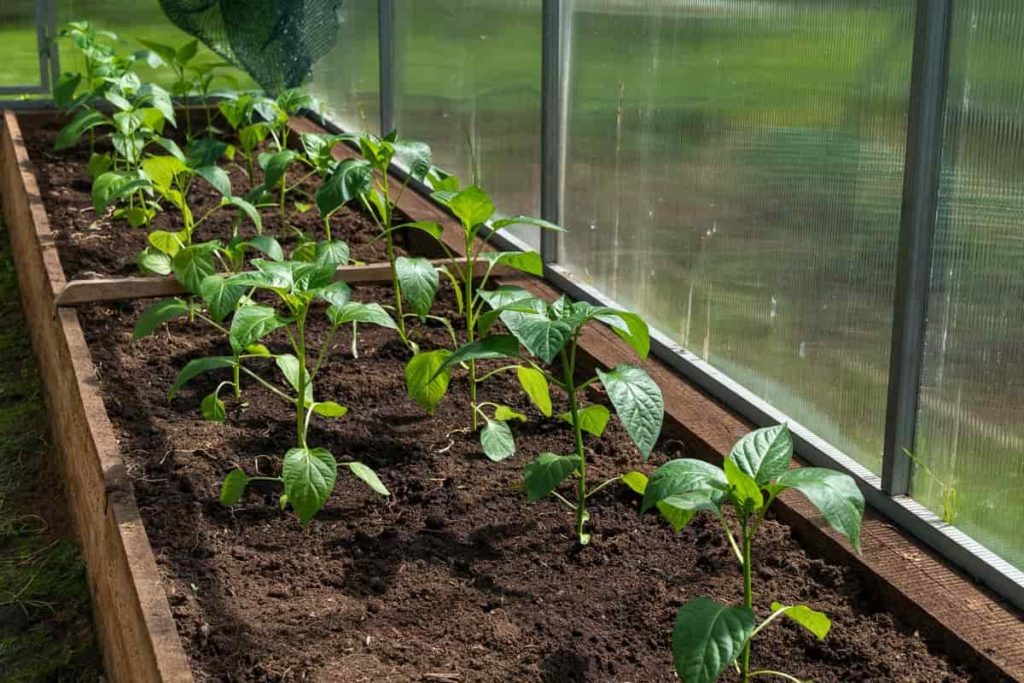
Adding individual minerals can increase the chances of unbalanced soils and disrupt soil ecosystems. Epsom salts will move faster in your soil as it is extremely soluble in water. As a result, your groundwater can be contaminated with this chemical. Instead of using Epsom salts, you can use homemade compost, organic fertilizer, and natural soil amendments as nutrient enhancers for your soil.
What to do with soil when growing Pepper
Planting easy-to-grow Basil with your Peppers can improve the taste of Peppers and help prevent pests like thrips, aphids, spider mites, and flies. Carrots won’t compete with the garden space or Peppers for the sun, and they also produce a living mulch that reduces weeds that can help your Pepper crop thrive. Many flowers make the best Pepper companions, including the Geranium, Alliums, Nasturtium, Petunias, and African or French marigolds.
These flowers add vibrant colored bursts, attract pollinators, and prevent many pests that can ruin the Pepper crop. Onions partner well with Peppers as they don’t take much space and protect against slugs and cabbage worms. In the kitchen, they can also improve your Pepper taste.
Herbs, especially Oregano, Dill, Cilantro, Chives, and Marjoram, are good companion plants because they grow near the ground so that they won’t compete with the Peppers for space. Flowering herbs can attract ladybugs and butterflies, which are beneficial for Pepper. Low-growing Spinach is a good companion for Pepper as it crowds weeds without competing for sunlight or water.
In case you missed it: Helpful Tips from Experts for Home Gardening: Hints, Tips, Ideas for Beginners
Tomatoes and Peppers grow in similar conditions; planting these two nightshades together requires special attention at a distance. Tomato plants need more space than Peppers; otherwise, they become diseased and pest-prone while shading Pepper plants. Avoid planting Peppers with the following crops to avoid competition from nutrients or attracting the wrong type of pests. Avoid planting Peppers near Apricot trees.
A common disease of Pepper fungus can easily spread to your Apricot tree, ruining your fruit trees. Peppers and Beans are non-conforming soil nutrient requirements. Beans need nitrogen to thrive, which can stunt Peppers. Pepper plants from legume vines are also at risk of significant choking. Broccoli, Brussels Sprouts, Cauliflower, and Kale have different soil preferences than Peppers. Fennel is a greedy plant that can prevent the growth of Pepper plants by using nutrients they need to thrive.
- Seasonal Flower Gardening: Best Practices for Spring, Summer, Fall, and Winter
- How to Grow Hibiscus from Flower
- Plantation Ideas for Home Decoration: A Beginners Guide
- Flower Garden Designs and Layouts for Beginners
- Planting and Spacing Techniques in Papaya: A Beginner’s Guide
- Growing Gold: Essential Techniques for Planting Pineapples
- How to Make Kalanchoe Plant Bushy: Home Remedies and Solutions
- 11 Reasons Why Your Gardenia is Not Blooming: Home Remedies and Solutions
- Eco Elegance: The Guide to Designing a Drought-Tolerant Landscape
- Gardening on a Slope: Strategies for Hillside Landscaping
- Nourish and Flourish: Top Organic Mulches for Thriving House Plants
- Everything You Want to Know about Indian Mogra Flower: Discover Uses and Growing
- Green Thumb Success: Expert Tips for Cultivating Greenhouse Pumpkins All Year Round
- Maximize Growth & Flavor: The Ultimate Guide to Companion Planting in Herb Gardens
- How to Control Rhododendron Problems Naturally: Home Remedies and Organic Ways to Fix Them
- Natural Magic: The Remarkable Benefits of Cinnamon for Plants
- Best Steps to Revive Dying Tulip with Natural and Organic Treatment
- 10 Reasons Why Your Angel Trumpet is Not Blooming: Remedies and Treatment
- How to Fix Periwinkle Leaf and Flower-Related Problems: Natural Remedies and Solutions
- How to Fix Zinnias Leaf and Flower Problems: Discover Natural and Home Remedies
- Organic Steps to Induce Lemon Tree Flowers: A Comprehensive Guide
- Bloom Booster: Crafting the Perfect Homemade Bougainvillea Fertilizer
- Optimizing Growth: A Guide to Applying NPK Fertilizer for Potted Plants
- 10 Best Homemade Fertilizers for Rubber Plant: DIY Recipes and Application Method
- How to Boost Female Pumpkin Flowers: Effective Steps for More Flowers and High Yields
- Transform Your Indoor Garden: Top Benefits of Pink Salt for Houseplants
- 10 Best Homemade Fertilizers for Peacock Plants (Calathea): Easy DIY Guide
- Unlock Blooms: 9 Reasons Why Your Potted Chrysanthemum is Not Blooming
- 8 Reasons Why Your Potted Hibiscus is Not Blooming: Fix it with Simple Solutions
- Unlock Blooms: 9 Key Reasons Your Potted Frangipani Won’t Flower
- 10 Reasons Why Is My Ice Plant Not Blooming: Remedies and Treatment
- 10 Reasons Why My Potted Hydrangea Not Blooming: Treatment and Remedies
- 10 Reasons Why is My Wisteria Not Blooming: Remedies and Treatment
- 10 Reasons Why is My Goldfish Plant Not Blooming: Remedies and Treatment
- Maximize Your Space: Ultimate Guide to Balcony Gardening with Grow Bags
- 10 Reasons Why Your Iris is Not Blooming: Remedies and Treatment
